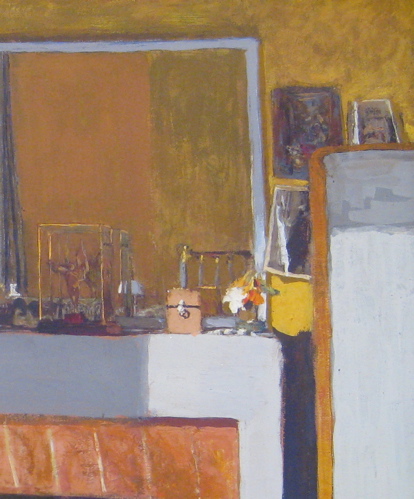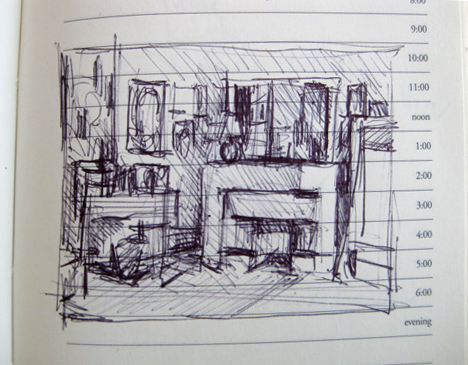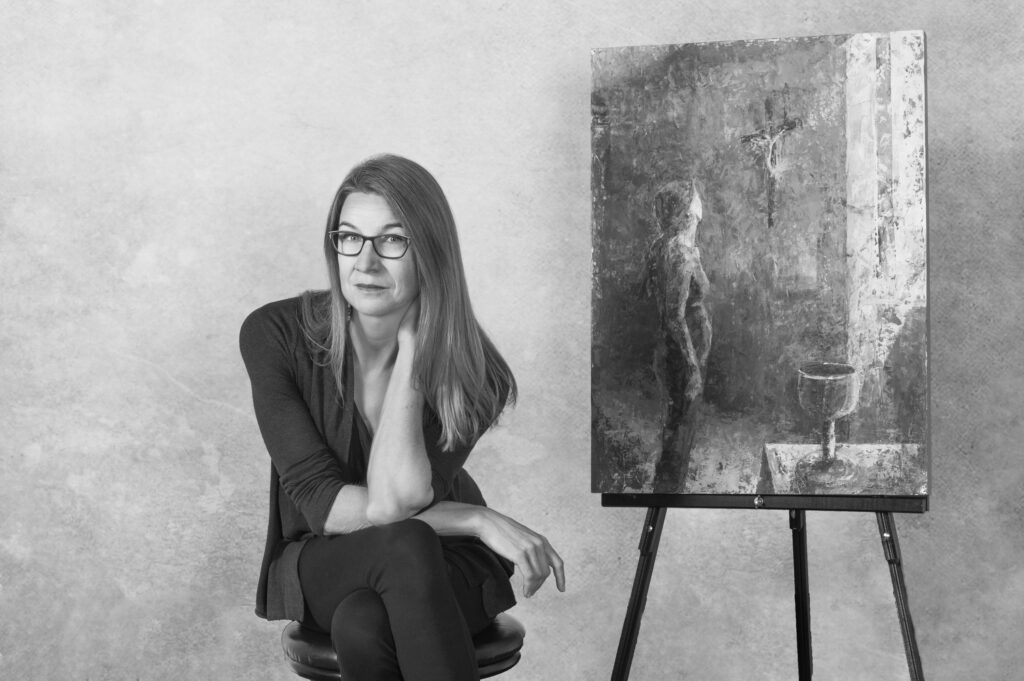This is the second post of my “sketchbook” from my visit to the Art Institute of Chicago. French painter Jean-Edouard Vuillard (1868-1940) has always been recommended to me as a colorist, but in this painting “Vuillard’s Room at the Château des Clayes”, I really saw it for the first time.
The warmth of the shadows, juxtaposed with the harsh cold gray of the raking sunlight is striking. The mirror reflects the same yellow-brown of the the room with just enough contrast so that the light is believable. The painting is really remarkable for its dramatic simplicity.

“Vuillard’s Room at the Château des Clayes”, Jean-Edouard Vuillard (1868-1940), Art Institute of Chicago
As a painter and painting teacher I often try to analyze a painting in terms of the color wheel. Why do I find the color relationships in this painting pleasing?
Essentially, our eyes desire color harmony: balanced color from the color wheel. This is why we so often see red paired with green, or orange paired with blue — these color pairs are called “complementary”, because they are opposite each other on the color wheel, and as a pair they give our eyes the warm/cool harmony they desire. In Vuillard’s painting he uses a triadic color scheme – meaning that the colors used in the painting create an equilateral triangle on the color wheel.

Here we have a beautiful harmony of Blue-Violet (that steel grey of the stone mantle is bluish-purple), Red-Orange (the warm brick of the fireplace), and Yellow-Green (the dark warm walls). I love breaking down something beautiful to its elements to discover why it “works”.
My (color-less) study of Vuillard’s painting while at the museum:

Study of “Vuillard’s Room at the Château des Clayes”, Ink on Paper, ©Michelle Arnold Paine


